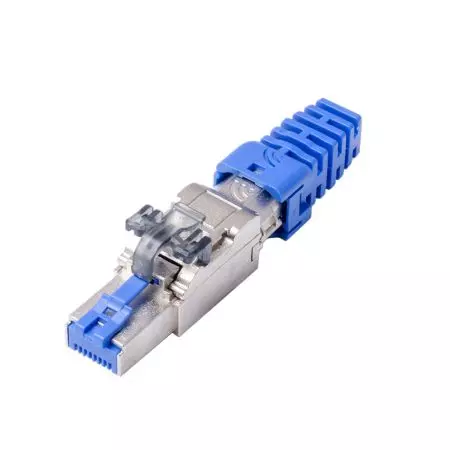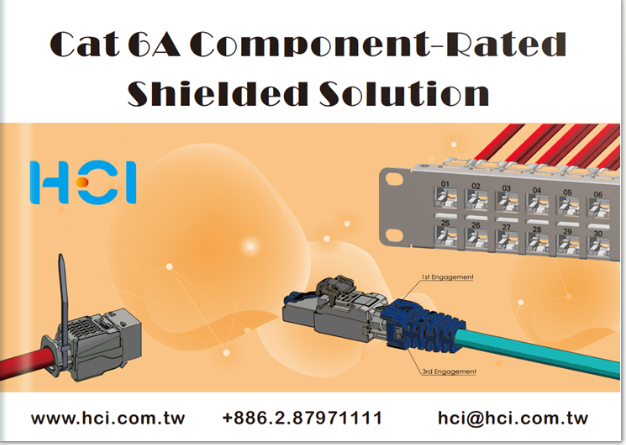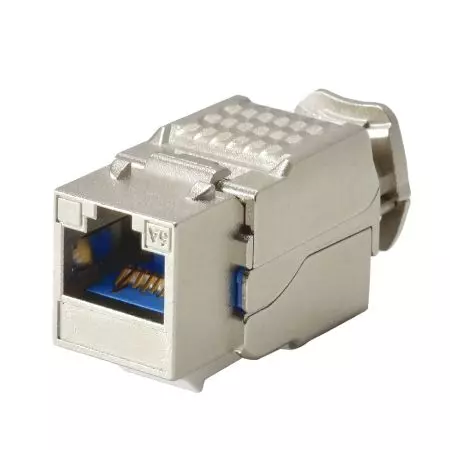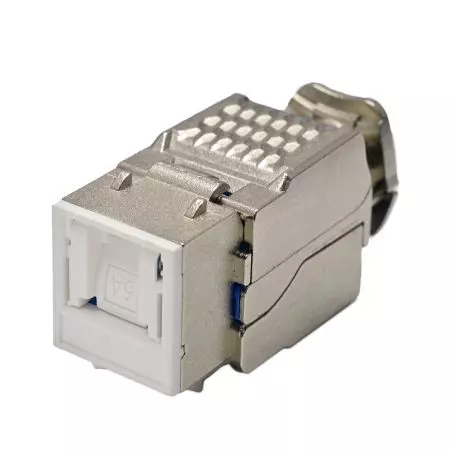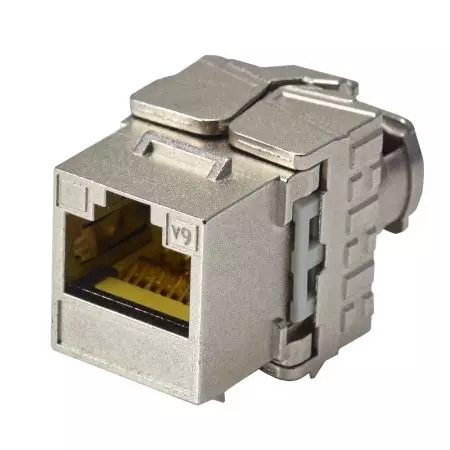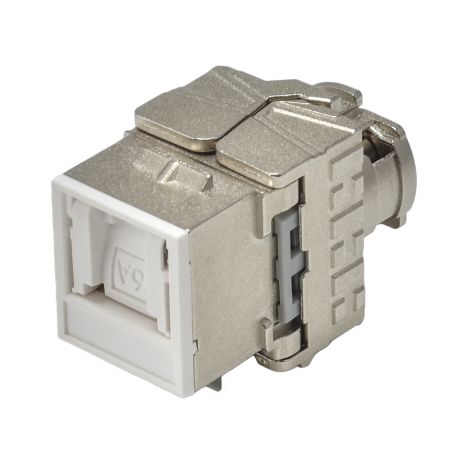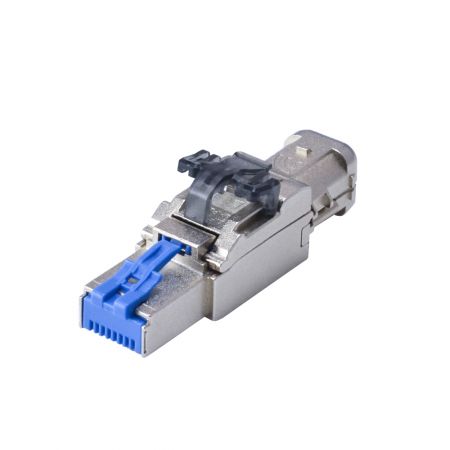STP - TIA Cat 6A Component-Rated
Shielded
The reason why you should opt for "Component-Rated"
Many of you may question the relevance of "Component-Rated" connectivity when your hand-held tester cannot verify the performance of the "Connecting Hardware". In such cases, you might question the reasons for opting for "Component-Rated" connectivity and how it benefits you.
The answer to that question is straightforward - to accommodate multiple connections.
Particularly in larger-scale sites, the real-world installations frequently involve three to four connections, primarily attributed to the presence of consolidation points near zone distribution areas and the need for cross-connect requirements in telecom rooms. Standards take into account the possibility of encountering multiple interconnections in the field. Hence, to address this scenario, both TIA-568.2-D Annex L and ISO/IEC-11801 Section 8.2.2 offer recommendations for diverse worst-case configurations.
You may be wondering what the performance of a "Component-Rated" keystone jack should ideally be like. In the following, we will examine the performance of the HCI "Component-Rated" keystone jack 3013ALKVAS6A in the four typical worst-case scenarios depicted in standards and observe the outcomes:
♠ Starting with example #1:
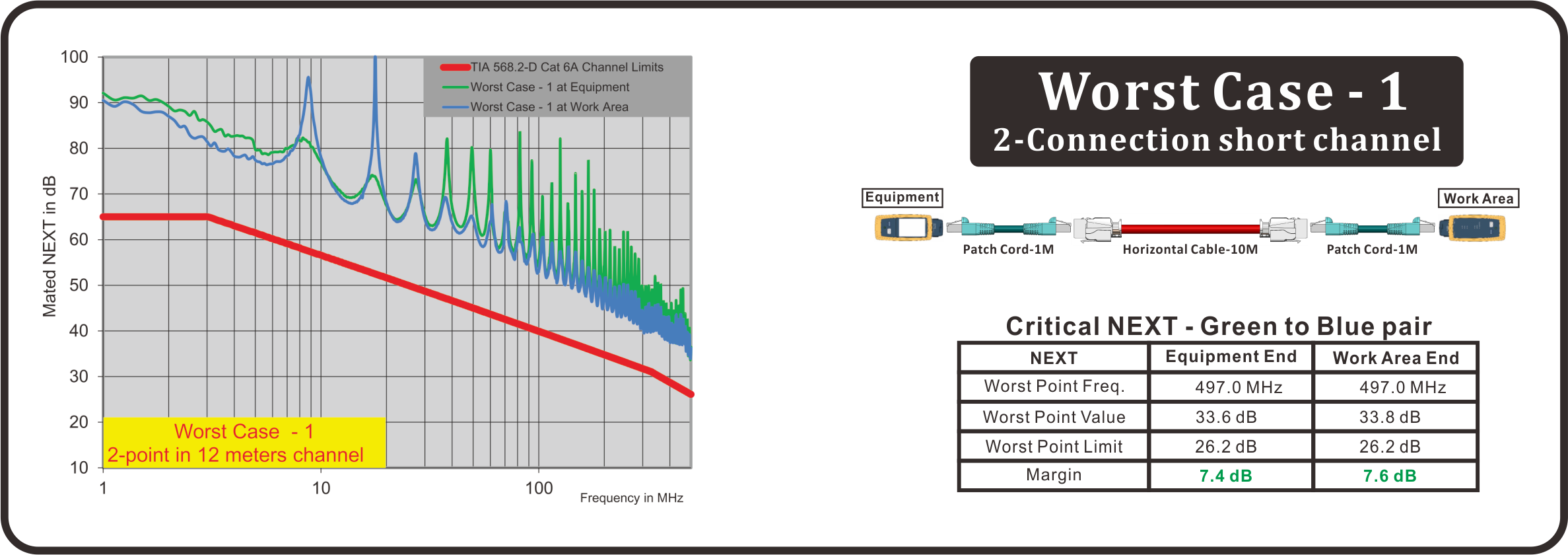 The most commonly used setup in data centers is the 10-meter port-to-port configuration. However, using a 1-meter patch cord at both ends can pose challenges to the overall channel performance.
The most commonly used setup in data centers is the 10-meter port-to-port configuration. However, using a 1-meter patch cord at both ends can pose challenges to the overall channel performance.
♣ Continuing with example#2:
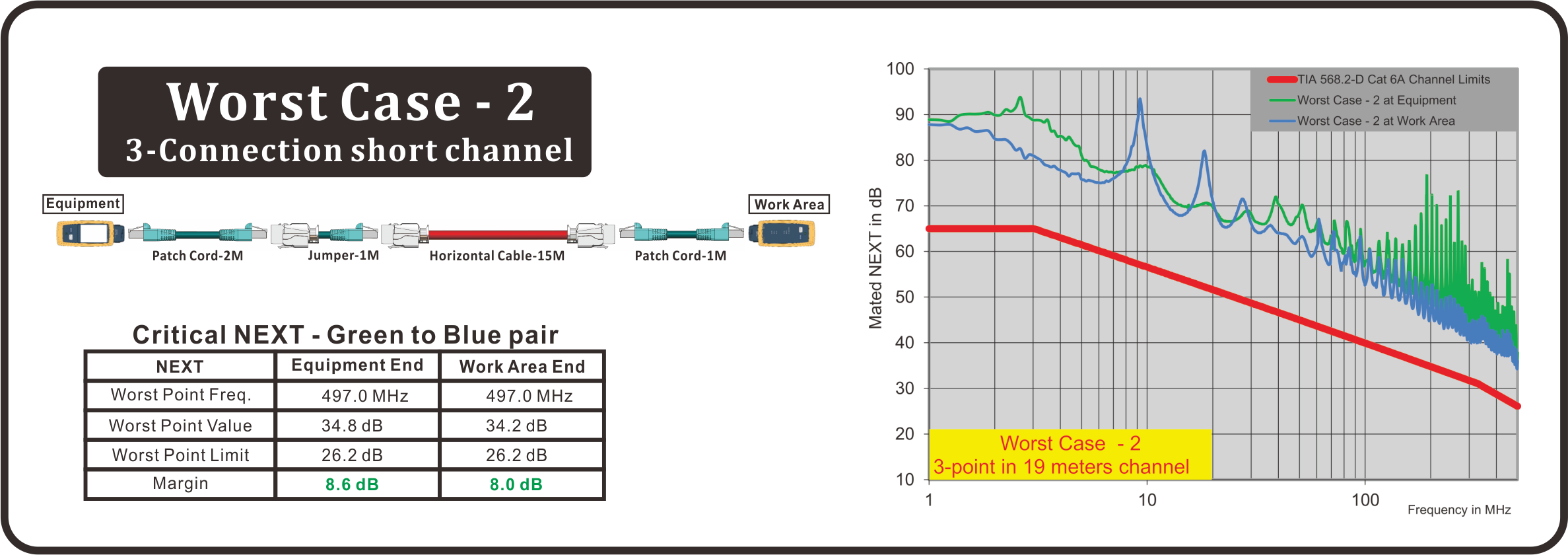 Cross-connect in TR. It is important to note that the mating of patch cords and jacks represents the weakest point within the entire channel, particularly when it comes to the two-to-one meter connection, which can negatively impact NEXT (Near-End Crosstalk) performance.
Cross-connect in TR. It is important to note that the mating of patch cords and jacks represents the weakest point within the entire channel, particularly when it comes to the two-to-one meter connection, which can negatively impact NEXT (Near-End Crosstalk) performance.
♥ Subsequently, considering example #3:
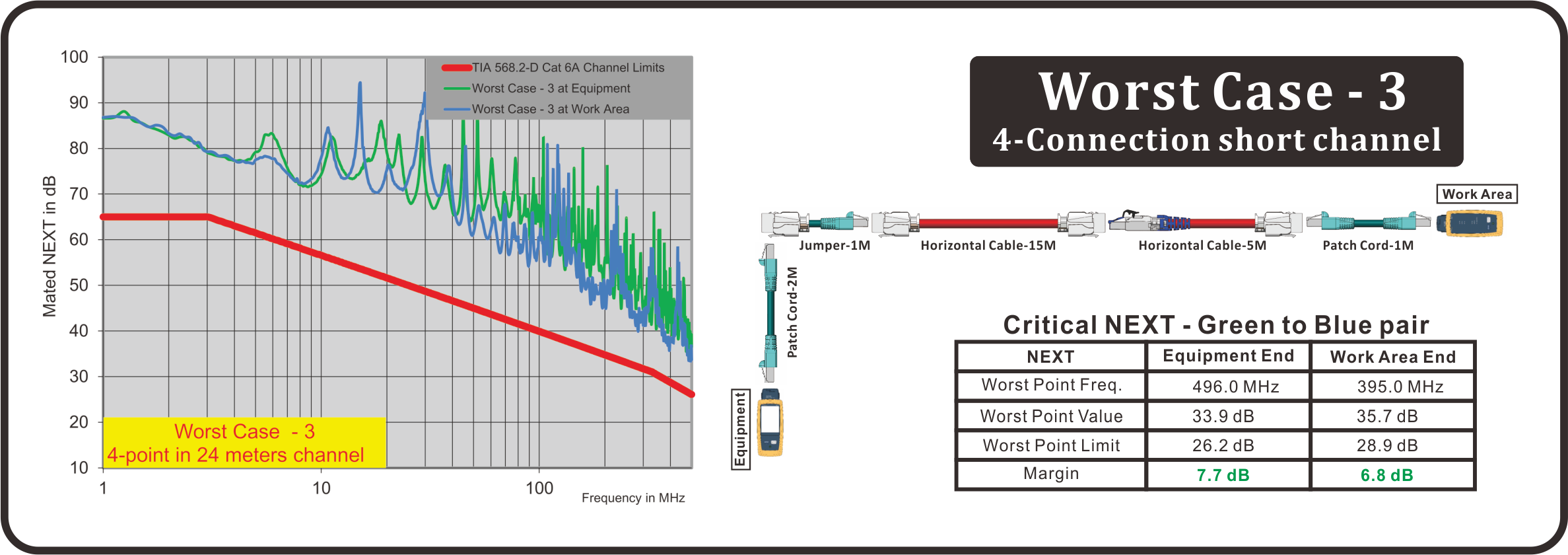 The channel includes a Consolidation Point (CP) to facilitate zone distributions. However, this configuration poses an even greater challenge compared to the previous setup, as the addition of one more connection at the CP can further degrade performance near the Work Area (WA).
The channel includes a Consolidation Point (CP) to facilitate zone distributions. However, this configuration poses an even greater challenge compared to the previous setup, as the addition of one more connection at the CP can further degrade performance near the Work Area (WA).
♦ Lastly, let's consider example #4:
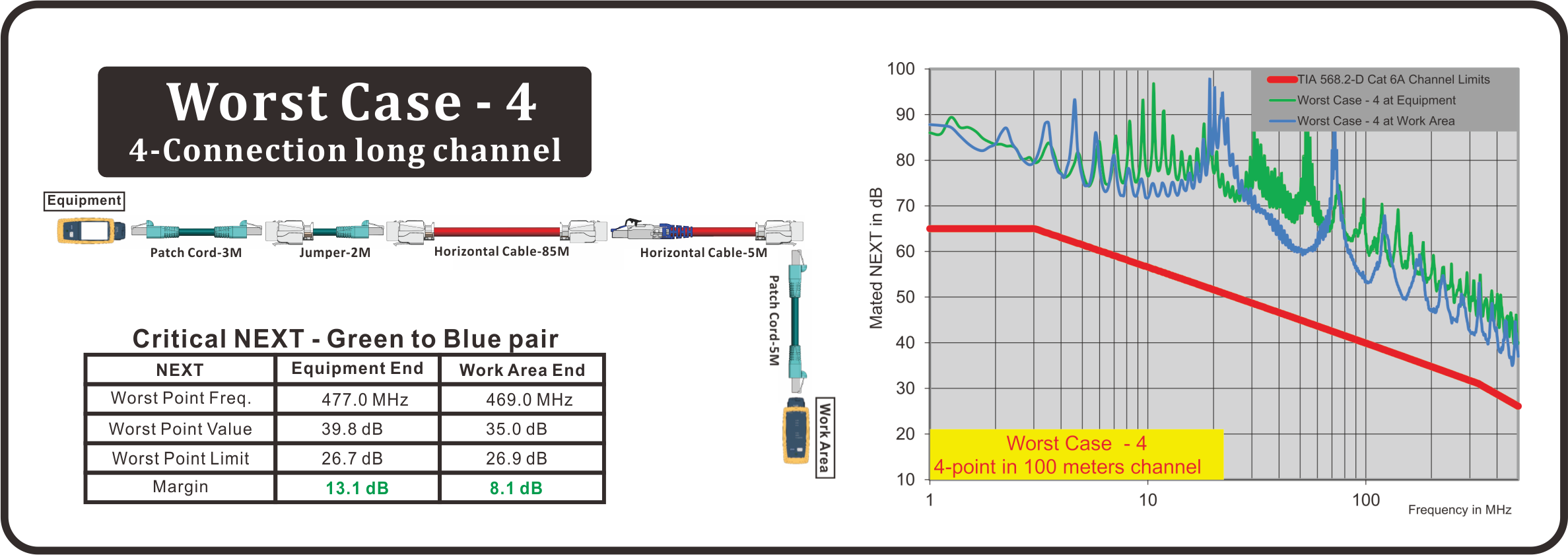 Here we have a typical setup involving four connections, including a Cross-Connect in the Telecommunications Room (TR) and a Consolidation Point (CP) in the horizontal cable spanning a maximum distance of up to 100 meters. This configuration becomes quite demanding when it comes to ensuring low insertion loss and return loss across all connections.
Here we have a typical setup involving four connections, including a Cross-Connect in the Telecommunications Room (TR) and a Consolidation Point (CP) in the horizontal cable spanning a maximum distance of up to 100 meters. This configuration becomes quite demanding when it comes to ensuring low insertion loss and return loss across all connections.
We just want you to know
The test results provided above offer a comprehensive explanation. It is evident that only Component-Rated connectivity can effectively handle all possible scenarios, irrespective of the length or number of connections involved.
If you have intentions to upgrade to Cat 6A or are planning on a new project underway, you may ponder on this matter. To address the needs of scenarios involving "Short-Link" and "Multiple-Connections within a relatively short distance", it is essential to prioritize Component-Rated connectivity. This approach is crucial for preserving a balanced cabling system, granting you a sense of reassurance and ensuring top-notch performance.
Download the brochure ↓↓


